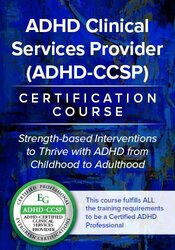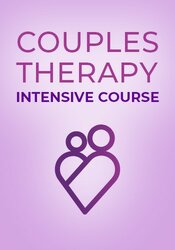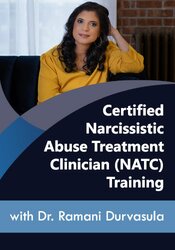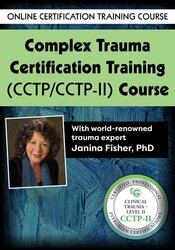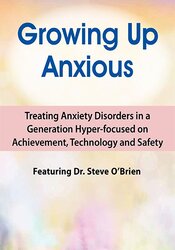Description
We all want kids to be successful, safe, and secure, but such good intentions are having unintended consequences.
Three societal ingredients…. a hyper-academic mindset, preoccupation with safety, and a tech-obsessed society… are fueling childhood anxiety, leaving kids fearful, avoidant, and ill-equipped for adulthood.
Watch child psychologist Steve O’Brien, Psy.D., for 2 days filled with practical strategies as he presents a three-level treatment model for childhood anxiety using targeted, evidenced-based therapies to:
- Connect with and “rewire” anxious children and families
- Provide child-friendly instruction about anxiety and the brain
- Promote self-expression and healthy coping in shut-down kids
- Reduce debilitating social anxiety in adolescents
- Treat technology-related worries, obsessions, and compulsions
- Develop anxiety-free safety plans for distressed kids and parents
Don’t miss out on this cutting-edge program for equipping and empowering kids to not only cope with anxiety, but to thrive as they develop a growing sense of both competence and confidence!
CPD
CPD
This online program is worth 12 hours CPD.
Speaker
Steve O’Brien, PsyD, is a clinical psychologist with nearly 30 years of experience treating children, adolescents, families and young adults in his Clearwater, Florida practice. His specialty areas include child-adolescent anxiety/depression, ADHD, Autism Spectrum Disorders, and divorced/blended family adjustment. Dr. O’Brien utilizes an integrative-systems model, which tailors treatment to the developmental needs of youth and families. Intensive parent consultation and youth-focused family interventions are critical components of his therapeutic approach.
Dr. O’Brien has worked in numerous healthcare environments, including community mental health, psychiatric, inpatient/residential, substance abuse, and medical facilities. He also served as associate professor of child-adolescent studies at the Florida School of Professional Psychology. In addition to his clinical work, Dr. O’Brien is an app developer (Life@Home by Psychtouch.com) and a media consultant for both Tampa Bay and national news outlets. Visit obrienpsychology.com for more information.
Speaker Disclosures:
Financial: Dr. Steven O'Brien maintains a private practice. He receives a speaking honorarium, recording and book royalties from Psychotherapy Networker and PESI, Inc. He has no relevant financial relationships with ineligible organizations.
Non-financial: Dr. Steven O’Brien is a member of the American Psychological Association and the Florida Psychological Association.
Objectives
- Summarize the psychosocial characteristics of the “internet generation” and their contribution to anxiety development in children and adolescents.
- Describe the primary developmental, systemic, academic, and social-technological factors relevant to the development and maintenance of anxiety disorders in children and families.
- Identify the various social, emotional, and behavioural manifestations of anxiety in children in multiple contexts, including home and school.
- Utilize semi-structured observational and interview methods for collecting relevant history and clinical information with anxious and minimally verbal children and their parents/caretakers.
- Determine effective rapport-building strategies with anxious, resistant, and defensive children and parents/caretakers.
- Adopt a ‘parent consultation’ model as a supplement to individual child and family therapy and as part of an integrated treatment approach.
- Conduct ‘Child-Focused Family Therapy’ using therapeutic agendas and directive communication techniques.
- Teach children a developmentally appropriate psychoeducation framework for understanding the relationship between anxiety, the brain, and the body.
- Implement self-regulation strategies to reduce child/adolescent anxiety and promote adaptive coping.
- Identify clinical, co-occurring diagnostic patterns with respect to anxiety and related disorders in children and how to determine initial treatment targets.
- Distinguish between over-arching versus disorder-specific interventions for child/adolescent anxiety. As well as the 3 levels of anxiety treatment.
- Implement and integrate developmentally-appropriate CBT, desensitization, and exposure therapy techniques to enhance treatment with anxious children.
Outline
GROWING UP ANXIOUS - 3 KEY INGREDIENTS
EARLY EMPHASIS ON HIGH ACHIEVEMENT AND PERFORMANCE
- Emotional costs of a hyper-academic mindset and over-evaluation
- Performance philosophy pitfalls: perfectionism and procrastination
- Consequences of strong individualism: anti-collaborative attitudes
TECHNOLOGY IMMERSION: PLUGGED IN BUT TUNED OUT
- Tech-savvy, socially naive
- Fearless online, fearful offline
- Gratification-dependent, grit-deficient
PREOCCUPATION WITH SAFETY AND POTENTIAL THREAT
- Overprotected but underdeveloped….socially and emotionally
- How dysregulated adults promote anxiety-ridden kids
- Failure to launch: Why “adulting” is difficult and frightening
INTEGRATING EVIDENCED-BASED TREATMENT APPROACHES
- Behaviour therapy/modification
- Cognitive-behaviour therapy
- Family-focused/systemic therapy
- Interpersonal therapy
- Play/art/creative therapies
- Mindfulness-based therapies
GUIDELINES FOR RAPPORT-BUILDING AND CLINICAL INTERVIEWING
- Semi-structured parent interviews: Combining engagement with efficiency
- Developmentally-sensitive child interviews: Integrating observation, play and dialogue
- Parent consultation: Constructing a framework for parental involvement
PSYCHOEDUCATION FOR PARENTS AND KIDS: THE FIRST INTERVENTION
- Teaching parents about their child’s overactive brain
- Giving a child-friendly “tour of the brain”
- Highlighting the mind-body connection
- Social Anxiety Disorder
- Evaluating cognitive versus physiological features
- Cognitive-behavioural methods for getting teens out of their heads and into the world
- Role-playing and free association games for promoting real-time interaction
- Desensitization strategies for combating social avoidance
BIOPSYCHOSOCIAL TREATMENT: THE SECOND INTERVENTION
- “LOWERING THE TEMPERATURE, SLOWING THE PACE”
- Reducing Emotional Intensity and Conflict for a Calmer Environment
- Healthy habits and daily transition rituals
- Self-expression and support-seeking skills
- 3 R’s of anxiety management: Recognize, Relax, Redirect
TARGETED TREATMENT FOR MAJOR (DSM-5™) ANXIETY DISORDERS: THE THIRD INTERVENTION
- Generalized Anxiety Disorder
- Identifying manifestations of chronic worry
- Cognitive strategies for discrediting the “what-if? person”
- Self-talk for empowering the “helpful coach”
- Cognitive-behavioural redirection for worries
- Paradoxical relaxation for overachievers
- Separation Anxiety Disorder
- Assessing psychological and somatic components
- Pre-treatment preparation: It’s all about the plan
- Developing a treatment-support team
- Action plans for high-distress episodes
- Strategies for distressed/enmeshed parents
- Phobias and Panic Disorder
- Cognitive and physical/physiological symptoms
- Essential ingredients for desensitization
- “Challenge ladders” for gradual exposure
- Planning-for-panic strategies
- Obsessive-Compulsive Disorder
- Variations in obsessive-compulsive symptomatology
- “Brain challenges” for rigid perfectionists
- Mindfulness strategies: “Balloon breathing and wet noodles” for high-threat perceivers
- Controlled withdrawal and replacement for tech-addicts
CO-OCCURRING DISORDERS: TREATMENT IMPLICATIONS, RISKS, AND LIMITATIONS
- Depressive Disorders
- Attention-Deficit/Hyperactivity Disorder
- Autism Spectrum Disorders
ANXIETY-RIDDEN AT SCHOOL: CONSIDERATIONS AND CLASSROOM APPLICATIONS
- Relationship-building with distressed/disruptive kids
- Dealing with the (dreaded) 3 D’s:
- Defiance, Disrespect, Disruption
- Creating a calm, responsive classroom
- Reducing task avoidance and test anxiety
- Managing compulsive technology usage
- Identifying, intervening, and preventing bullying
- Tips for (post) pandemic adjustment
MEASURING TREATMENT PROGRESS
- Evaluating symptomatology and functional level
- School consultation and recommendations
- Medication: Guidelines for discussion and referral
Target Audience
- Social Workers
- Psychologists
- Counselors
- Teachers
- School Administrators
- Occupational Therapists
- Speech-Language Pathologists
- Nurses
- Marriage and Family Therapists
- Other Helping Professionals who Work with Children
Reviews
Overall:
5
Total Reviews: 1


